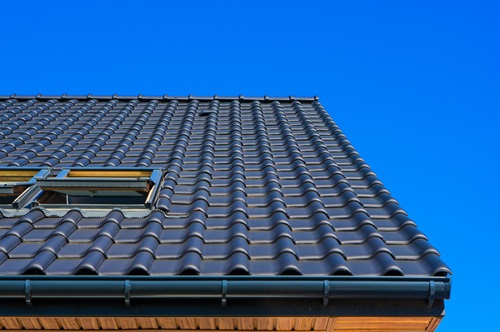Gutters are essential components in architecture, serving as a critical element in the water management systems of buildings. By channeling rainwater away from the structure, gutters prevent water damage and preserve the integrity of the building’s foundation. This article provides an in-depth exploration of gutters in architecture, their importance, types, installation processes, and maintenance.
What is Gutters – architecture?
Gutters in architecture refer to the channels or troughs that are installed along the edges of a roof to collect and redirect rainwater away from the building. They play a crucial role in preventing water damage to the foundation, walls, and landscaping of a structure.
Gutters are typically made of materials such as aluminum, steel, copper, or vinyl, and come in various shapes and sizes to accommodate different roof designs and rainfall volumes. They are usually attached to the fascia board or eaves of a building and are sloped slightly to ensure proper drainage.
Properly installed gutters are essential for maintaining the structural integrity of a building and preventing water infiltration. They help to channel rainwater away from the foundation, reducing the risk of basement flooding and soil erosion around the property.
In addition to their functional role, gutters can also enhance the aesthetic appeal of a building. They come in a variety of colors and styles to complement the architectural design and can be customized to match the overall look of the structure.
Regular maintenance of gutters is important to ensure their proper functioning. Leaves, debris, and other obstructions can clog the channels and prevent water from flowing freely. Cleaning and inspecting gutters at least twice a year can help prevent costly repairs and prolong the lifespan of the system.
In regions with heavy rainfall or snowfall, larger gutters and downspouts may be necessary to handle the increased water volume. Proper sizing and placement of gutters are crucial to ensure effective water management and prevent overflow or leakage.
Some modern architectural designs incorporate innovative gutter systems that blend seamlessly with the building’s aesthetics. These include hidden gutters, rain chains, and integrated downspouts that add a touch of sophistication to the exterior.
When designing or renovating a building, architects and contractors must consider the climate, roof pitch, and landscaping to determine the most suitable gutter system. Factors such as roof material, gutter capacity, and maintenance requirements should also be taken into account.
In conclusion, gutters play a vital role in protecting buildings from water damage and preserving their structural integrity. By understanding the importance of gutters in architecture and investing in a quality system, property owners can ensure the longevity and durability of their structures.
The Importance of Gutters in Building Design
Water Management
Gutters play a vital role in controlling water flow, directing rainwater away from the building’s foundation. This prevents soil erosion, foundation damage, and basement flooding.
Structural Integrity
By efficiently channeling water away, gutters protect the building’s walls, roof, and foundation from water damage. This ensures the longevity and structural integrity of the property.
Aesthetic Contribution
Architecturally, gutters can also enhance the visual appeal of a building. They can be designed to complement the style and design of the property, adding both functional and aesthetic value.
Types of Gutters
K-Style Gutters
K-Style gutters are the most common type used in residential buildings. They have a decorative shape that resembles crown molding, making them both functional and visually appealing.
Half-Round Gutters
These gutters have a semicircular shape and are often found on older or historic buildings. They are efficient in water flow and provide a classic look.
Box Gutters
Box gutters are typically used in commercial or industrial buildings. They are built into the roof structure and are designed to handle large volumes of water.
Custom Gutters
For unique architectural designs, custom gutters can be created to match the specific needs and aesthetics of a building.
Materials Used in Gutters
Aluminum
Aluminum gutters are lightweight, rust-resistant, and available in various colors. They are easy to install and maintain, making them a popular choice.
Copper
Copper gutters offer a distinctive look and are highly durable. Over time, they develop a patina that can add to the building’s character.
Steel
Steel gutters are strong and durable but require regular maintenance to prevent rust. They are ideal for areas with extreme weather conditions.
Vinyl
Vinyl gutters are affordable and easy to install. However, they may not be as durable as metal options and can become brittle over time.
Installation of Gutters
Planning and Design
Effective gutter installation begins with careful planning and design. This includes selecting the appropriate gutter type and material, as well as determining the optimal placement for downspouts.
Mounting
Gutters are typically mounted using brackets or hangers. Proper alignment and secure attachment are crucial to ensure efficient water flow and prevent leaks.
Downspouts
Downspouts are essential for directing water from the gutters to the ground or drainage system. Proper placement and installation are necessary to avoid water pooling and damage.
Maintenance of Gutters
Regular Cleaning
Gutters should be cleaned regularly to remove debris such as leaves, twigs, and dirt. This prevents clogs and ensures proper water flow.
Inspection
Regular inspections help identify potential issues such as leaks, rust, or sagging. Early detection allows for timely repairs and prevents more significant damage.
Repairs
Minor repairs, such as sealing leaks or reattaching loose gutters, can often be done by homeowners. However, major issues may require professional assistance.
